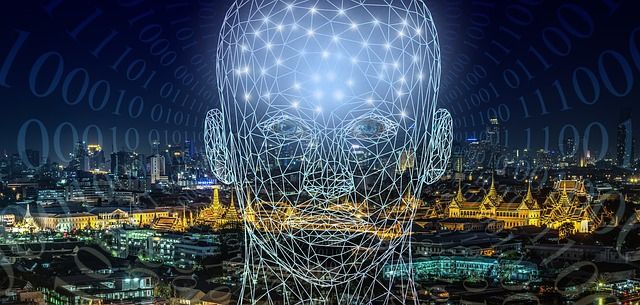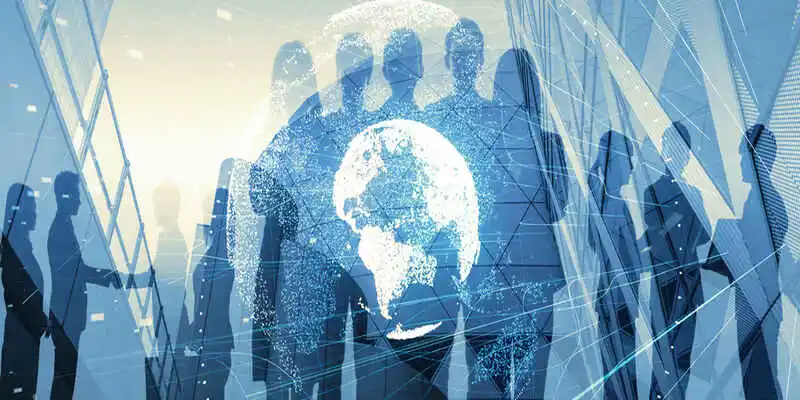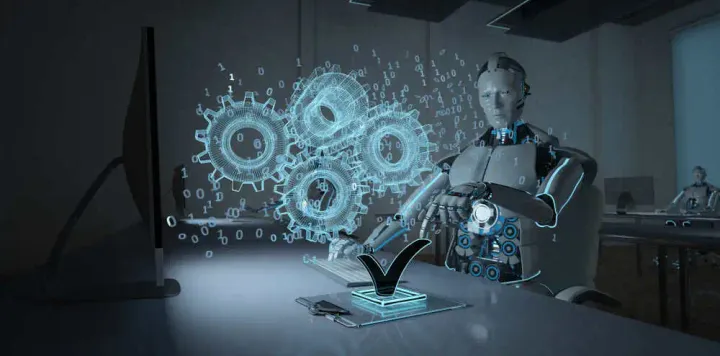The Future of Artificial Intelligence (AI)
Artificial intelligence (AI) is shaping the future of nearly every human being on the planet. Artificial Narrow Intelligence (ANI) is now a reality, and researchers are now focusing on Artificial General Intelligence (AGI) and Artificial Super Intelligence (ASI) that is beyond human level.

From the baffling brain of many super smart animals having cognitive abilities like octopus and chimpanzees to smallest autonomous flying robot called “RoboBee” – Intelligence has been the most valuable and influential resource that exists.
The term intelligence refers to the capacity to acquire and implement different skills and knowledge to solve a problem along with the higher level abilities such as abstract reasoning, general mental capability and learning various situations. Intelligence is incorporated with a variety of cognitive functions such as; language, concentration, perception, planning and memory as well.
Human Intelligence refers to the human’s intellectual ability that permits us to think, understand complicated concepts, recognize patterns, learn from various incidents and experiences, apply logic, make decisions, retain information and communicate with other human beings. The uniqueness of human intelligence lies in Emotions like passion and motivation and Consciousness which lead the human to achieve multifaceted cognitive tasks.
Artificial Intelligence – Science to create Smarter Human-like Machines
Artificial intelligence (AI): This term was first coined at a computer science conference in Dartmouth in year 1956. Artificial Intelligence is a branch of computer science which aims at designing and programming a system or software in such a way to enable it to emulate the human intelligence. The term is also referred to a machine that is competent enough to be exhibiting human mind characteristics like thinking and learning besides presenting the solution of a problem. AI powered systems just rely on data fed into it and learn by constant trainings. Going forward, owing to the budding potential of the computers, more complicated models of AI, incredible amount of data being accumulated in network devices of more or less every industry, AI is evolving as a mainstream technology and is being compactly intermingled into almost every facet of our lives. AI has become such a valuable tool that is influencing common man’s daily life. Every time you use a technology today, like a computer, a smart phone or any electronic device, then you are bound to be using artificial intelligence as part of the implanted software of that technology.
AI is influencing the future of almost every industry and human being. It has been the main driver of today’s rising technologies like Robotics and Big Data and is expected to remain the technological innovator in the future as well.
The final goal of AI, as envisioned by the scientists and researchers, to achieve human intelligence is perhaps the most ambitious goal ever in Science. Until now, AI is still budding and advancing as from sophisticated technologies like Image and Natural Language Processing, Speech Recognition to Robots and Autonomous Cars, all require human intervention. Going forward from just a vision to actual developments, AI has undoubtedly come a long way but final goal of AI where AI identical to human intelligence is still a long way to reach.
Machine Learning (ML) & Deep Learning (DL) – Approaches to achieve AI
Machine Learning – a roadmap to reach AI, is an application of AI that exhibits different algorithms requiring structured data to build ML models which are then used to train a machine in order to accomplish a given task. It intends to enable a machine to learn automatically from its experience and then make a prediction. For instance, when you buy something from any website, it shows related searches like: People, who bought it, also saw this.
Deep learning — A technique to implement Machine Learning, is a subdomain of ML intended to create algorithms resembling the neural connections of the human brain, and function likewise the machine learning, but the algorithms have many levels. Each level of algorithm presents a different understanding of the data it conveys.
Machine and Deep learning both differ from each other mainly on account of data feeding technique. The algorithms of ML entail assembled data whereas DL algorithms depend on multiple layers of Artificial Neural Networks without any human interference where the system eventually learns from the mistakes by itself.
AI, at present – Artificial Narrow Intelligence
Today’s artificial intelligence that we see around us is most often concerned on enabling the systems to perform a single task exceptionally well. This is actually weak sort of AI and is called Artificial Narrow Intelligence because it has been designed to perform a narrow task. ANI which is a replication of human intelligence operates within a restricted framework and outshine human only in the tasks which are pre-defined in a narrow context.
A few examples of ANI around us are:
- Google search queries that are answered by ANI algorithms
- Image recognition software
- Alexa, Siri and other personal assistants
- Self-driving cars
- Video recommendation for YouTube and Netflix based on your browsing history
- IBM's Watson – an excellent healthcare technology
- Spam filters that do automated sorting to keep your inbox clean
- Chatbots – that provide immediate response and service to customers.
Although, Today’s Artificial Intelligence (ANI) has the potential to emulate human intelligence, but much of the current Artificial Intelligence systems are still under discussion as they still need more research on their techniques of solving tasks.
Applications of Artificial Narrow Intelligence
Today, many industries are empowering and applying ANI to enhance efficiency, reduce costs, and mechanize the tasks. e.g., in the manufacturing companies, the AI induced Robots work along with the humans to perform tasks like assembling, stacking etc. Even in the healthcare department, the diseases are diagnosed faster and with more accuracy than ever before by analyzing huge demographics, medical device recordings and laboratory images. For example, epithelial ovarian cancer which by normal process remains undetected or detected at the stage 3 or 4, can now be detected with the help of AI at stage 1A when it has 94% chances to be cured. Apart from early disease diagnosis, there are Virtual Nursing Assistants available to supervise the patients. The role of ANI in the Education department is not less than any other. There are Virtual tutors to assist human mentors and facial analysis techniques measure the emotions of students.
Limitations to Artificial Narrow Intelligence
The machines or systems applying ANI may seem intelligent but they are operating under far more constraints and restrictions than even the most basic human intelligence. Hence apart from the huge anticipation linked with artificial narrow intelligence, there are a lot of shortcomings and even limitations of the technology. So just because it holds gigantic potential in near future, does not mean that it does not has its challenges.
The limited abilities of today's ANI were underpinned in a report by co-author Yoav Shoham of Stanford Artificial Intelligence Laboratory in which he stated that the machines exhibit outstanding performance in a specific domain, but contrary to humans, its performance declines dramatically even with a slight modification of the task. For instance, a human who can read Japanese characters would definitely understand Japanese speech and know somehow about Japanese culture. In contrast, many different AI systems would be required for each of these tasks.
A few of the many limitations regarding ANI include:
- It requires an extensive quantity of exceptional data in order to produce precise outcomes, and these data prerequisites are somehow hard to meet in many industries.
- At times, when its about the human’s replacement with machinery or systems, for instance in the hospitality sector, enormous disturbances may occur leading to a decreased satisfaction level of customers as the customers appreciate the interaction with humans more.
- A change in a situation or task results in a declined efficacy of this system because of its pre-defined specifically programmed task. For example, DeepMind- a robot manufactured by a research lab can defeat anyone in the game StarCraft2 playing with tremendous excellence, however if ANI behind the same robot is forced to play another game, even much more easier than StarCraft, it will fail drastically. Similarly other highly specialized machines such as DeepBlue, and AlphaGo are also domain specific.
- In systems with ANI, the knowledge cannot be transferred from one domain to another.
As we deal with these constraints, we are moving towards a new paradigm— AGI, which is predicted to be having the flexibility to adapt unexpected situations and perform well in multiple domains without supervision.
The Long term Goal of Researchers – Artificial General Intelligence
McCarthyand his colleagues visualized AI as a system which would be competent enough to learn the tasks and give the solution to the problems without given instructions on each facet. AI, as envisioned originally by the pioneers i.e., about imitating human thinking is called
Artificial General Intelligence
Today, the future goal of researchers is to develop Artificial General Intelligence. Since ANI may outclass human in some pre-defined assignment ( like chess playing in case of DeepMind), AGI will surpass human at almost each intellectual task.
Hence, an Artificial General Intelligence (AGI) would be a machine/system competent enough for understanding any intellectual task just like any human, and with the same capability to learn how to accomplish a huge range of tasks independently. In short, AGI is about developing a system as Smart as a Human. AGI does not exist currently in real life but has been featured in many science-fiction movies like the robots from Westworld, “Star Wars”, “Iron Man” or Data from Star Trek: The Next Generation.
However, creating an AI system, satisfying all the criteria for AGI, is quite complex. So as per some scientists and researchers, Artificial General Intelligence is still decades away.
However, research in the areas of Neuroscience and Machine Learning is intensifying in recent years, and the knowledge obtained from the related research projects can now be employed for the creation of AGI. Many experts and researchers have different opinions about when we will achieve AGI. A survey was conducted of above 350 machine learning and neuroscience experts in May 2017 about the possible time for achieving AGI. About 50% of the experts believed that AGI will be achieved before 2060. Ex director of MIT AI Lab, predicts that it would happen in 2040 while the CEO of Unanimous AI company, Louis Rosenberg, puts the date even more early i.e., around 2030.
For AGI to counterpart human intelligence, the system or machine is supposed to transfer what it has learnt from a situation to another where needed, work in collaboration with other systems and human as well, use common sense, and achieve phenomenal self-awareness.
Dr. Heather Berlin, a Neuroscientist, holds the belief that consciousness involves subjective conscious experience along with the cognitive ability to associate this experience with another . Hence, in order to create a system containing artificial consciousness, pure intellectual power is prerequisite besides a subjective conscious experience.
At present, the most popular approach for achieving AGI is what we call Whole Brain Emulation “WBE” – in which a machine has thinking ability in addition to decision making on many different subjects. WBE is actually a low-level brain model in which hardware-based concepts are used to imitate the whole brain from both molecular and atomic levels. In this model, a biological brain is scanned, mapped and its state is copied into a computer system or any other device. The computer runs an imitation model so originally that it will perform every task in the same way as the original biological brain.
A biological/human brain is the most complex organ having a large number of neurons and synapses. On average, each of one hundred billion neuron of our brain is connected to the other neurons with the help of around 7000 synapses. The number of synapses in a child’s brain is estimated to be around 1015(1 quadrillion), however, this number declines with age. So, a tremendously powerful computer is needed to develop a low-level brain emulation model. The possible set-up for Brain Emulation was first popularized in a report by Moravec in 1988, in which the gradual replacement of a conscious human brain with the software was described. AGI will be achieved in near future as predicted by Kurzweil, Google’s director of Engineering, if the computer’s processing power and the technologies of brain-mapping continue to grow at rapid speed.
Another approach to reach AGI is called Whole Brain Architecture (WBA), which uses software-based notion to interpret and incorporate each component of the brain as a computational model.
The development of Artificial Intelligence is intensifying remarkably, primarily because of the WBA approach for AGI- where the machine learning modules are combined within a cognitive architecture drawing on brain. Computer architecture is same as that of brain because both of them operate via a neuron system, called Neural Networks. Till now, scientists have just been succeeded in imitating the brain of a flatworm, 1-millimeter long, containing just 302 neurons. So we have a far way to reach when we would be able to recreate a human brain consisting of 100 billion neurons.
Artificial Super-Intelligence (ASI) – Intelligence beyond human level
The succeeding step of AGI is ASI when artificial intelligence is predicted to be surpassing human intelligence. ASI, at the time is all about suppositions, which makes it to having no limits to what it could achieve; from developing nanotech to age preventive objects, many thought provokers and scientists hold diverse ideologies and theories regarding the viability of attaining ASI. David Chalmer, an Intellectual scientist, holds the belief that AGI once attained, will be a roadmap to reach ASI on a broader scale by expanding its effectiveness and abilities. As per Moore law, there is no limit to the ultimate technological power since computing power becomes twofold every couple of years.
Kurzweil believes that when Artificial General Intelligence is achieved, it will rapidly upgrade itself, and a time will reach when it will surpass the level of human intelligence. He predicts this stage of achieving ASI to be attained in 2045, when today’s artificial intelligence will be one billion times more powerful than today’s human intelligence.
Future of AI – Positive and Negative Outcomes
AI, today is showing exponential growth in multiple sectors such as, medical care, customer services, armed forces and education etc. Huge amount of data, exceptional computing performances and different AI approaches are going to add efficiency and sophistication in future technologies.
Apart from the fact that Artificial intelligence is commencing in almost every field, the real artificial intelligence as envisioned by the AI pioneers (AGI) is still on its way and in near future, we will definitely be benefitting from it in real essence. Depending upon all the growing research in the field of AI, the future is anticipated to be no less than the fascinating Science-Fiction movies which ultimately will shape the future of the entire world.
Self-Driving Transportation: The first step towards automated transportation has been already achieved in the form of self-driving cars. However, the future is anticipated having Smart vehicles on the roads and even in the air which will go driverless.
Co-worker Robots: Robots and machines have already replaced human workforce in many industries. In future, the robots will be capable enough to perform multiple tasks in an organization, and are expected to develop more with regard to voice recognition, which will result in better communication with the robots. Woww!!!! It seems fascinating to imagine how we will be interacting and communicating with our new colleagues.
Medical Robotics and Pharmabotics: Instead of visiting a human doctor for health examination, intellectual robots are anticipated to be examining humans. These healthcare robots will be communicating with the patients, analyzing their health condition, and making the assessment for the next appointment. Apart from this, human are also predicted to be enjoying and benefitting from Pharmabotics in future that will act just like the ATM’s for medicines. It will bring gigantic changes in the field of pharmacy.
Entertainment Robotics: The growth and sophistication of technology has made the robots even more adaptive and interactive than earlier. The time is not far when virtual reality will get into our homes and we will be communicating, interacting with and getting responses from the robots at the same time.
Personal Assistance: With AI and its related approaches, the future is expected to be developing the Robots that have feelings and emote just like humans and would be used in diverse industries like hospitality industries, elder care and day care centers.
With all the robotic developments predicted in near future of AI, the most common apprehension for many experts is “Will the robots grab human’s jobs??? Just like Autonomous Vehicles, are highly expected to replace cab drivers in coming future. At Ball State University, a study was held that predicted that Insurance and Tax Return sectors are few of the many fields that are in jeopardy of becoming machine-driven rather than depending on human workforce. Cut it short, almost half of the low-skilled jobs are expected to get under control of robots. Hence, the most affected domain as a result of future AI will be the Employment sector.
Besides the fear of lacking job opportunities for humans, artificial intelligence, as anticipated in future, has also been a topic of criticism for many researchers in certain other aspects as well. Some visionaries like Stephen Hawking, Elon Musk, Steve Wozniak, and others have predictions that AI could be alarming because if machines started thinking likewise or better than humans, then where would humans stand?
Hubert Dreyfus, a philosopher, while criticizing strong AI argued that the computers could never attain human intelligence since it lacks childhood and cultural practices. However, many latest approaches to AI as Deep learning and Big Data have made his argument obsolete and are on the way to reach AGI. Furthermore, many experts argue that machines can never be equipped with the common sense which we the humans acquire or learn from our lived experiences and ultimately enables us to handle huge amounts of data to understand the world we live.
Perhaps the biggest apprehension is that AI will “replace” humans in a few years. However, it is not exclusively true. Although AI is highly progressing – now that machines can learn from experience and make smart decisions – AI cannot function effectively without relying on human’s intrinsic attributes like human intuition.
There have been massive altercations about the AI ethics as well. AI could change the human relationships, assault personal privacy, increase discrimination, create security threats through self-directed weapons etc. Many experts foresee the apprehension of a dystopian future as featured in many science-fiction narratives where super intelligent killer Robots control the world, either eradicating or enslaving all the human beings- as depicted in movies like Matrix or The Terminator.
Another obstructs to AGI is intricacy of environmental problems. The question arises whether the machines can actually resolve the hunger problem faced by the world or it can terminate the atmospheric changes.
Furthermore, AGI call for an unprecedented volume of data which is not an easy task. Some thought provokers believe that creating a group of super-intelligent humans using Genetic Engineering would be a better idea rather than achieving AGI while others speculate that AGI and ASI will result in new generations of supercomputers. These concerns regarding the future of AI seem overwhelming but at the same time they make the study impactful and fascinating.
Currently, we have just achieved Artificial Narrow Intelligence and we still have a long way to reach Artificial General Intelligence. Certain experts and researchers believe that AGI will be achieved in near future. Steve Wozniak, Apple co-founder, coined the “coffee test,” where he predicted that in coming years, a machine will be entered any home and it will figure out by itself that how a coffee cup is prepared. Ray Kurzweil, who is the direct of Engineering of Google, anticipates that until 2029, we will be having an AGI competent enough of passing Turing Test- which compares the conversational aptitude of a machine with a human. Kurzweil also predicted that the computers will be performing calculations at the same speed as that of the combined brains of the whole human generation. Certain other conducted tests predict if the robots will be capable to attend an educational institute successfully or put back major job functions with considerable efficiency in comparison to human workers.
Gary Kasparov, the youngest chess champion, in 2020 Digital Life Design Conference, talked about the value of AI in our daily lives. He argued that when it is about AI, we have more to gain than lose and rather than being demoted, the humans will be promoted in near future and instead of doing repetitive jobs, humans are anticipated to be indulging themselves in more creative jobs. So as the future of the AI seems bright and fascinating, the future of the human race seems more creative where the humans and robots will be working collaboratively to enhance the quality of human lives.
To cut a long story short, Artificial intelligence can be said to be the future of the world. Experts have a strong opinion that AI will play an integral role in human life and it will change the outlook of the world. The future looks more charming and promising with artificial intelligence!


